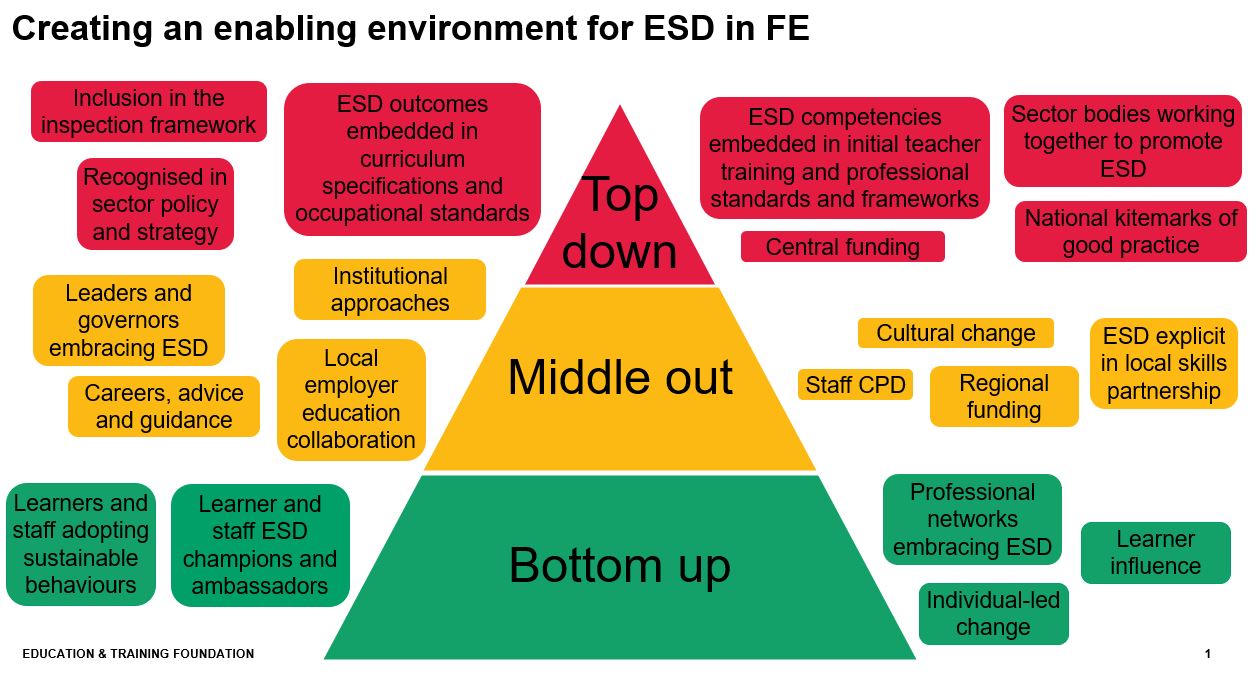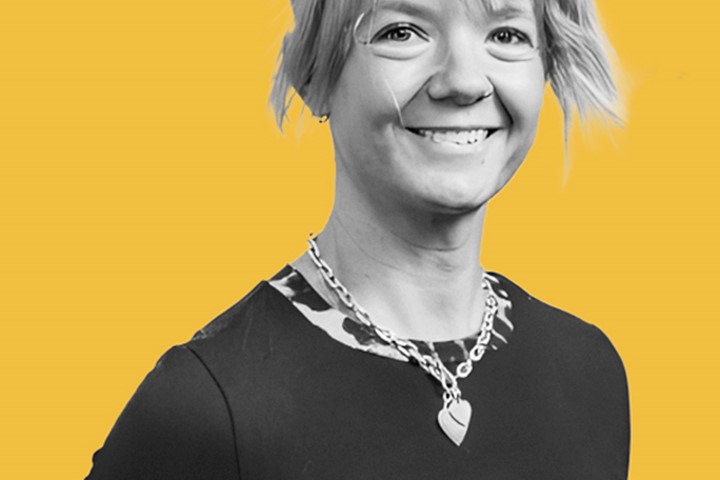Effective teaching practice for education and sustainable development - webinar round-up
In this webinar, evidence-based teaching expert Geoff Petty is joined by Charlotte Bonner, the ETF’s National Head of Education for Sustainable Development (ESD). This article looks back at the webinar and offers fresh insights and answers to questions asked during the live session.
Geoff and Charlotte discuss how to embed sustainability within classroom teaching and learning providing practical ideas to enhance and enrich your delivery.
Resources
Your say
- We can encourage students to think before they print, recycle as much as possible and think about their food and drink. Do they make their own and use little or no packaging? Do they think about less packaging or recyclables when they buy food and drinks and use reusable cups? And so on.
- The Fairtrade Foundation organisation has some useful lesson plans about bananas/chocolate on its website.
- Woodland Trust is giving free trees to plant for educational establishments. Students can then plant trees at their college to help with biodiversity.
Your questions answered
1. There does not seem to be mention of the importance of ESD in the Ten Point Plan (2020). Do you think it would be useful for ESD to be focused on by Ofsted?
The Government sees ESD as part of the tenth point (although it’s not clear from the title, it’s there in the broader policy document). It states: “To ensure we have the skilled workforce to deliver net zero, we have launched the Green Jobs Taskforce, working in partnership with business, skills providers and unions, to help us develop plans for new long-term good quality, green jobs by 2030 and advise what support is needed for people in transitioning industries. The taskforce will conclude its work in spring 2021, with the actions feeding into our Net Zero Strategy to be published later in the year.”
The ETF has submitted evidence to the Taskforce and contributed to post-submission workshops stressing that it’s vital that teachers and trainers in the Further Education and Training sector have the resources, skills and knowledge required to train those moving into jobs that will support green growth. We know from our research that the lack of ESD in the regulatory framework is one of the barriers to FE providers and their staff face so will be feeding this back to the Department for Education.
2. Do you have a template/questions that would prompt tutors to embed ESD into the Schemes of Work (SoW)/lesson plans
We’re currently developing a host of different resources to help educators embed ESD in their work. We recommend that before additions are made to SoW/lesson plan templates, staff are engaged in this change so they don’t see ESD as ‘another thing to do’. Bring the topic to a team meeting, training day or staff event to get people familiar with ESD first so people can start to see the potential and the links with what they already deliver.
Questions to ask could include: What are the ways your subject area relates to both negative sustainability impacts and positive sustainability solutions? What is the sustainability approach of leading employers related to your subject area? Where can you make space to discuss/explore sustainability with your learners? Can you include sustainability examples in any teaching materials? Can you use sustainability as part of projects or assessments? This should sit alongside a broader, organisation-wide discussion about whole-institution approaches to ESD.
3. I currently teach Health and Social Care qualifications - can you give me the name of the organisation you spoke about in relation to ESOL please.
We’re currently working with an organisation to develop those resources. You may also be interested in the work of the Centre for Sustainable Healthcare.
4. You talked earlier about 'top down' influences. Currently where do you think this comes from for colleges? I think all this starts with culture change.
We think the top down influences on the sector include ESD’s inclusion in the regulatory framework, sector policy and strategies, curriculum specifications and occupational standards, initial teacher training and professional standards. We also think there needs to be resourcing available to enable providers to invest time in their whole-institution approaches to ESD (which would include their culture, their curriculum, how they manage their operations and their community and partnerships). We are working with other sector bodies collaboratively to promote ESD and may see kitemarks of good practice in future. Culture change is critical and can come from the top down, as well as middle out (organisational or regional responses) as well as the bottom up. This diagram shows more on this subject.

Webinar FAQs
- Where can I find the on-demand version of this webinar?
You can access the on-demand webinar via the webinar page on the SET website or at the top of this page. This will usually be available within a day of the live webinar ending. - Can I share the slides with colleagues?
Yes – slides and on-demand webinars are available to all, whether you are a SET member or not. Live webinars are exclusive to SET members only.





